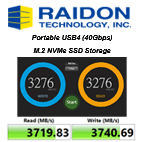Top 5 Microsoft Hyper-V Backup Solutions
From Arcserve, Atempo, Commvault, Unitrends and Veritas
This is a Press Release edited by StorageNewsletter.com on April 18, 2022 at 2:02 pm This report, published on April 15, 2022, was written by Jerome M. Wendt, president and founder, DCIG.
This report, published on April 15, 2022, was written by Jerome M. Wendt, president and founder, DCIG.
2022-23 DCIG Top 5 Hyper-V Backup Solutions Report Now Available
DCIG announces the availability of the 2022-23 DCIG Top 5 Hyper-V Backup Solutions report. This report provides guidance on the Top 5 backup solutions organizations should consider to meet their Windows Server Hyper-V backup requirements.
Windows Server Hyper-V: Primary Server Virtualization Platform
Analyst firms that track server virtualization software market expect it to continue to grow. While forecasted growth rates vary, analysts generally put its CAGR at 5-6%. These same analyst reports also identify Windows Server Hyper-V as one of the primary server virtualization platforms used by enterprises.
Server virtualization in general and Hyper-V specifically have transformed how enterprises manage their physical server infrastructure. Able to host multiple VMs on a single physical machine, Hyper-V simultaneously lowers costs while increasing operational efficiency.
Microsoft also makes multiple software tools available to assist enterprises in deploying and managing Hyper-V. For example, enterprises may use Windows PowerShell and Hyper-V Manager to centralize and automate Hyper-V management. Many also use Microsoft’s Failover Clustering and Hyper-V Replica. These provide HA (HA) and VM replication and DR (DR), respectively.
Definition of Hyper-V Backup Solution
The analyst identified about 30 offerings suitable for protecting applications, data, and workloads hosted on Hyper-V. Of these, 12 met DCIG’s definition of Hyper-V backup solution. This report only included offerings with 2 or more deployment options.
Each solution may be deployed in at least 2 of the following 3 ways:
- Preconfigured physical or virtual backup appliance
- Licensed software on a physical or VM, residing on-premises or in the cloud
- Cloud-based SaaS accessed via a subscription
A backup offering’s supported deployment options often represent the first feature that organizations consider as they make a buying decision. More organizations want to acquire offerings that match their IT operations.
Their IT operations may fall into one or more of the following general categories:
• Cloud-based. All IT operations get hosted in a general-purpose cloud, such as Amazon AWS, Microsoft Azure, or Google Cloud Platform. Hosted in the cloud, organizations often subscribe to many of the cloud services, to include compute, networking, and storage, among others. They also expect to obtain backup as a cloud service, or as a backup-as-a-service.
• On-premises. These organizations host their hardware and software on-premises. In this instance, they want to obtain a backup offering that also operates on-premises.
• Hybrid. More organizations host applications, data, and workloads both in the cloud and on-premises. They then want a backup offering that gives them multiple deployment options. This gives them the flexibility to select the most appropriate option for each environment.
• ROBO. ROBOs come in many sizes with various staffing levels, number of applications, and amount of data in each location. Organizations will need a backup offering with multiple deployment options to align with the needs of each office.
Common attributes of all Hyper-V backup solutions
In evaluating the 12 Hyper-V backup solutions, all these offerings shared commonality in their support of the following features.
These included:
- Support Windows as a guest OS. All 12 solutions protect Windows Server 2012, 2016, and 2019 when hosted as a guest OS on a VM.
- Integrate with and create application-consistent backups for leading Microsoft applications. All these solutions integrate with and can create application consistent backups of the following on-premises Microsoft applications: Active Directory, Exchange, and SQL Server.
- Integrate with and create application-consistent backups for Oracle Database.
- Support for block, file, and cloud storage backup media targets. All these solutions support using local block and NAS for storing backups. They also support using off-premises, S3-compliant cloud storage to store backup data.
- Provide multiple restore options. Using any of these solutions, organizations may perform the following types of restores. All support granular file and folder restores. They also all support restoring a VM image restore to the same or a different Hyper-V host.
- Email, phone, online knowledgebase, and web chat support. All these solutions afford midsize enterprises the option to contact them for support using email, phone, an online knowledgebase, or web chat. Organizations may also minimally access and get this support options from one or more of these providers the same day they need it.
Hyper-V Backup Solutions
The general categories under which the features evaluated for these Hyper-V backup solutions fell included:
• Backup administration
• Backup capabilities
• Configuration, licensing, and pricing
• Recovery and restore
• Service and support
Based on these criteria, DCIG awarded the following Hyper-V backup solution providers a Top 5 ranking (in alphabetical order:)
• Arcserve
• Atempo
• Commvault
• Unitrends
• Veritas














 Subscribe to our free daily newsletter
Subscribe to our free daily newsletter


